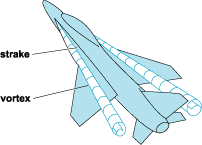Q1 vortex I would think - the edge of the floor plate is shaped which suggests they're trying to encourage a vortexhardingfv32 wrote:1) "the lower component (of the exhaust flow) is used to seal the outer edges of the diffuser."
How is this done, air screen or vortex formation?
2) Why are the winglets on the hubs not movable aero devices and thus restricted?
Brian
Q2 the cascades are, bizzarely, considered to be part of the brake duct. Yes, really. Another one of those "it's a hole but not a hole" type interpretations apparently.





